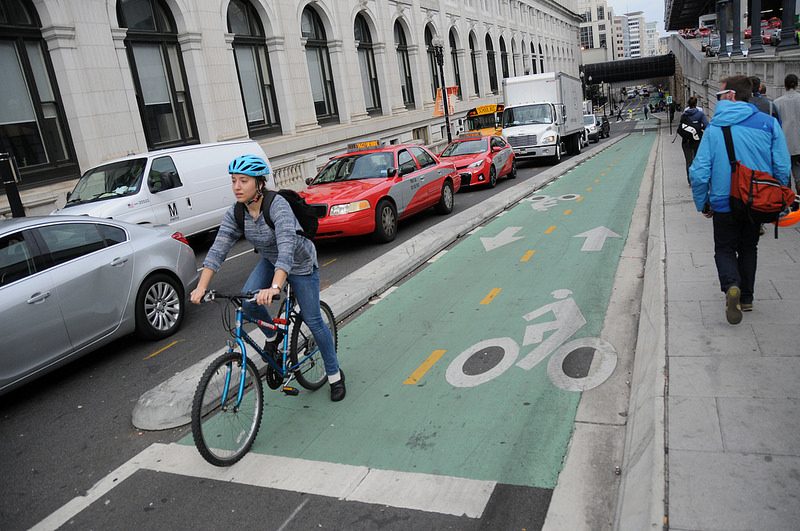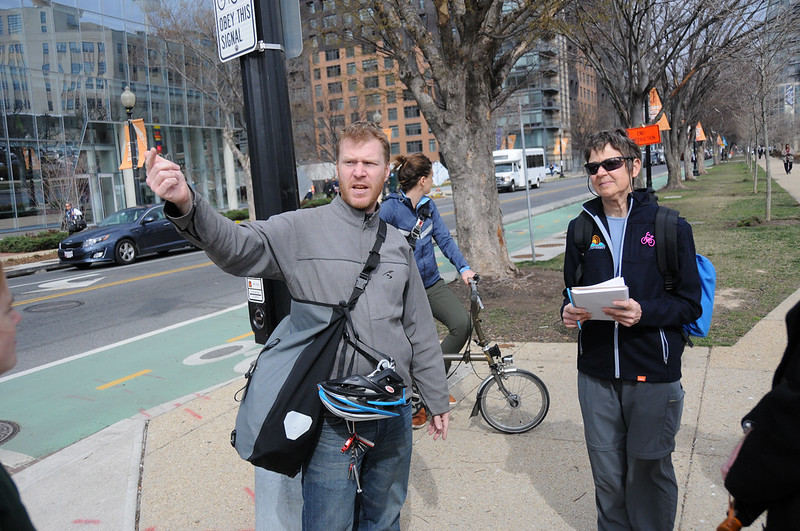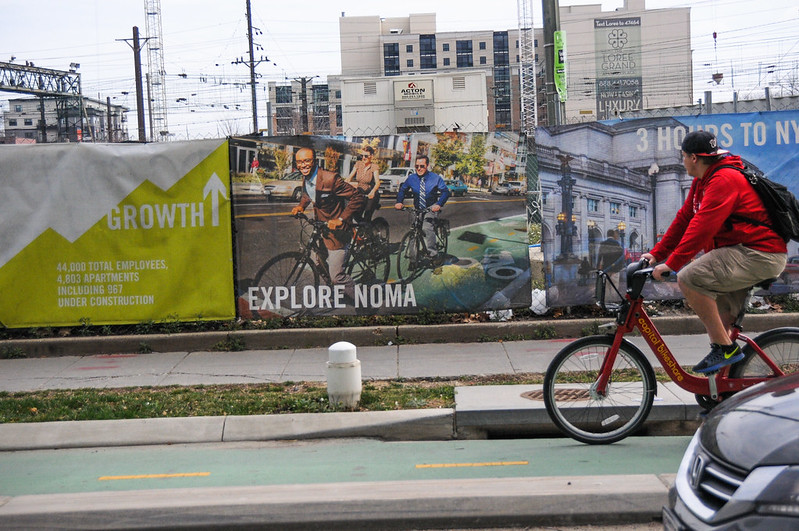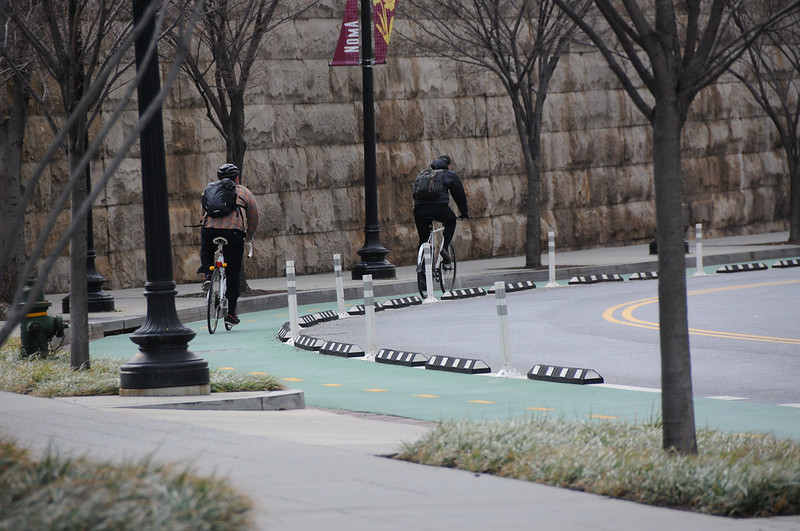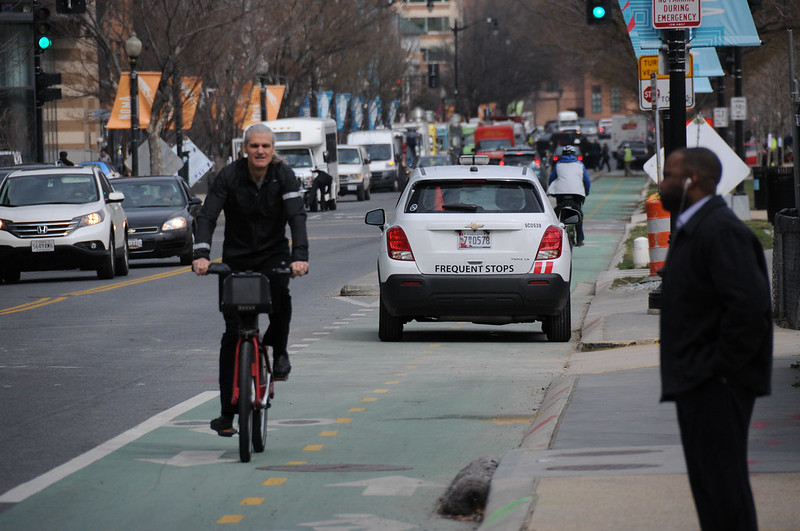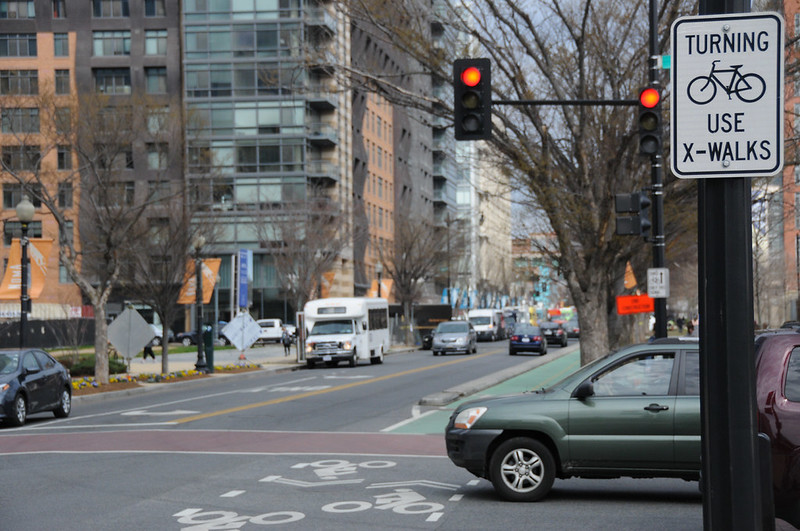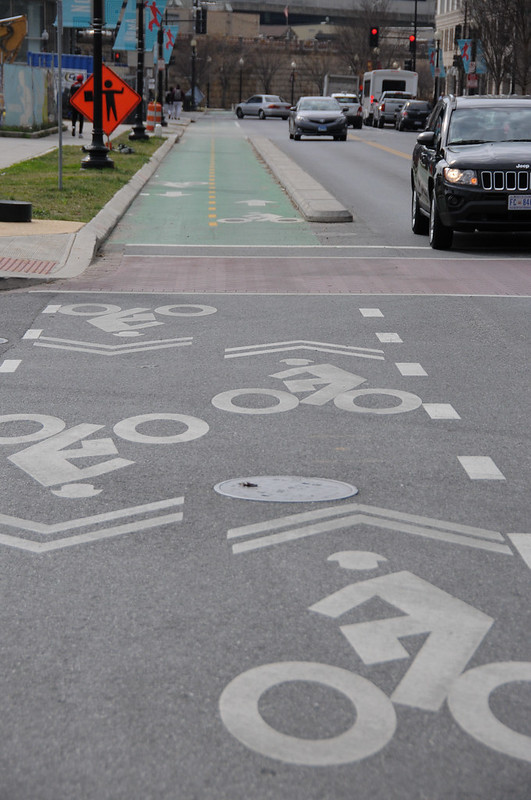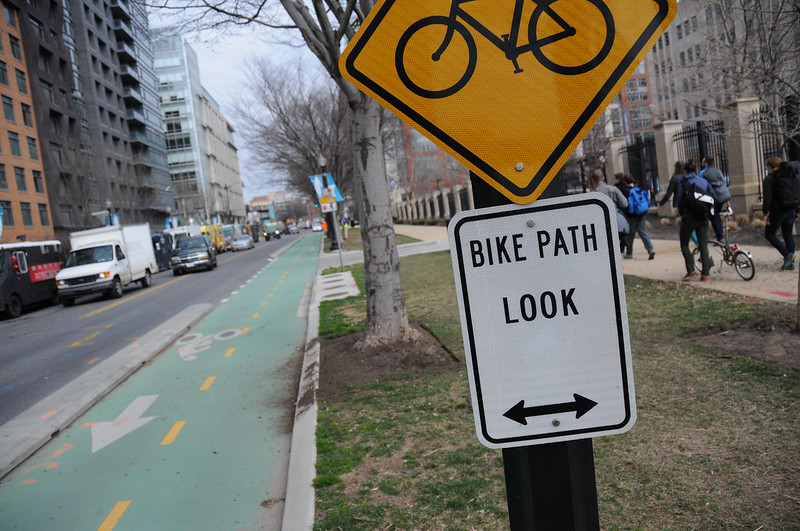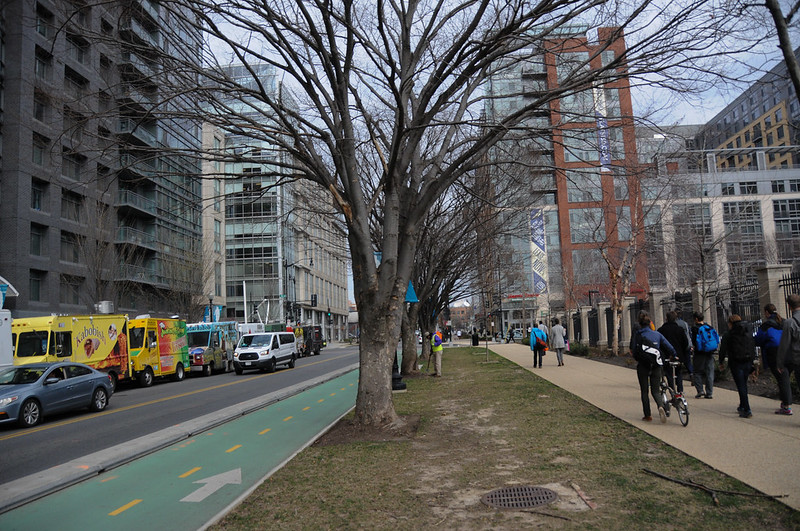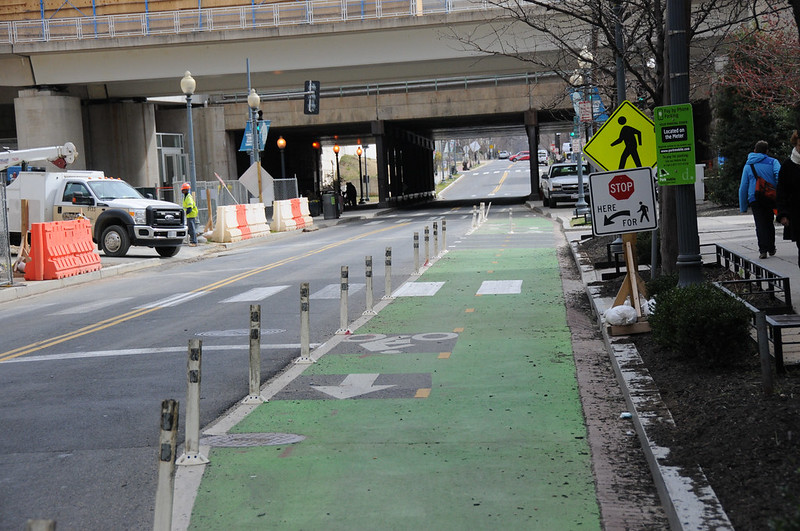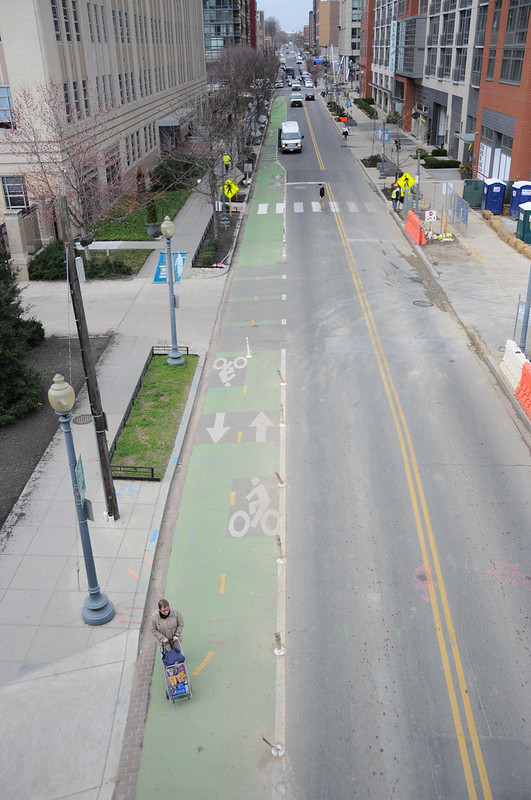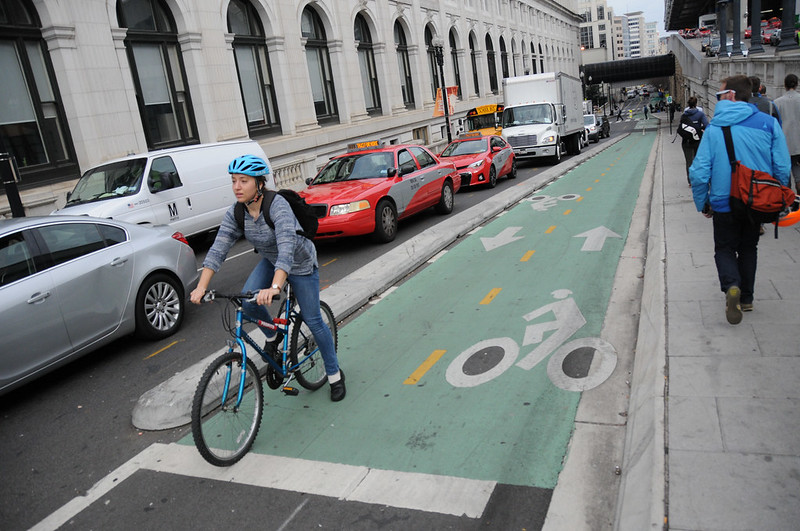
(Photos: J. Maus/BikePortland)
If it can happen in D.C., can it happen in Portland?
This spring the City of Portland will (finally!) embark on its Central City Multimodal project with an aim to create a network of protected bike lanes downtown. With that mind I joined a walking tour offered as part of the National Bike Summit this morning to take a closer look at one piece of the burgeoning bike network.
With about 16 miles of protected bike lanes already built in its downtown core, D.C. is well on its way to making a connected network that people can use to zip around on bikes with the same (if not better) ease and convenience as other modes. This morning’s tour focused on one project in particular: the protected bikeway on First Street NE.
The tour included insights from local experts including: District Department of Transportation Bicycle and Pedestrian Coordinator Darren Buck; NOMA Business Improvement District (BID) Planning & Economic Development Director Galin Brooks, and Washington Area Bicyclists Assocation Executive Director Greg Billing.
The First Street project, completed in 2015, created a bikeway from Union Station north to M St. It goes through the growing “NOMA” neighborhood (North of Massachusetts) and connects to the Met Branch Trail (a paved multi-use path similar to the Springwater Corridor).
The NOMA area reminded me a bit of Portland’s Pearl District. Extending for about one mile north of Union Station, it’s a new mixed-use neighborhood that has sprung up in a former industrial area. Hundreds of row-houses were demolished to make room for rail lines in the early 1900s when Union Station was built. As train lines vanished with the onset of highways in the second half of the 20th century, warehouses and factories sprung up in their place.
“These blocks became desolate in the 1980s,” Brooks described during the walking tour this morning. In the past decade the amount of developed square footage tripled from six million square-feet to 18 million square-feet. With that growth, the biggest change is that much of that development is residential.
Since D.C. has relatively good (for the United States) transit options (including one of the nation’s best bike share systems), a large majority of NOMA residents live without a car. Brooks said 80 percent of of them either walk, take transit, or use a bike to get around.
Advertisement
Because of this high non-driving mode share, business owners in the NOMA area have been very amenable to reconfiguring streets with improved access for bicycle users. “They just get it,” Brooks said.
As a result, DDOT was able to re-allocate 10-13 feet of road space on First St NE for 0.6 miles for the exclusive use of bicycles. The design is a two-way, green-colored bikeway with five-foot wide lanes and varying degrees of separation throughout.
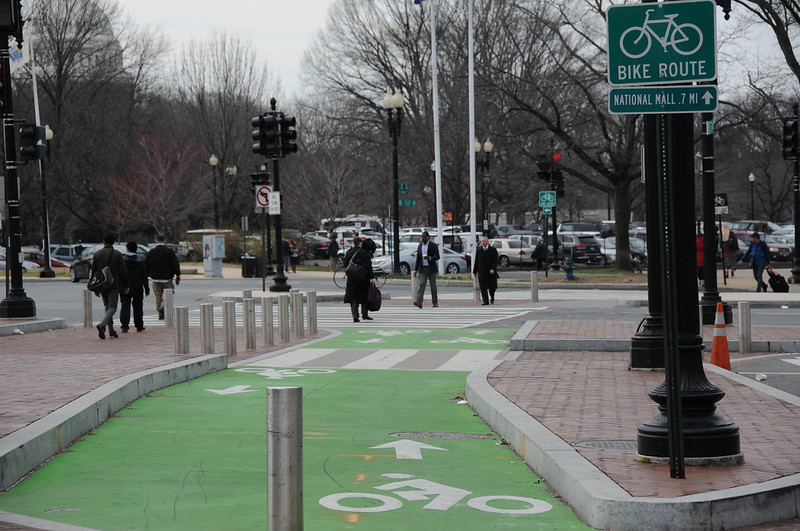
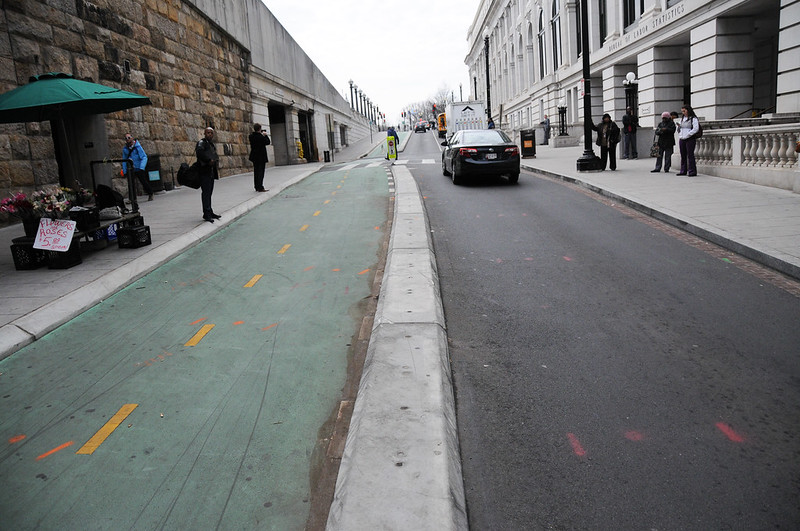
For the portion near Union Station, DDOT traded a standard northbound vehicle lane and bike lane to make room for the two-way facility. In that section there’s a three-foot concrete median between bicycle and auto users. In other sections the bikeway is separated by rubber curbs and flex-posts. In another section — where there’s a new building being built — there’s nothing but paint.
Darren Buck with DDOT said the main reason they opted for a two-way facility on one side of the street (instead of protected bike lanes on each side) was because there are no driveways on a large segment. And since a key impetus of the project was getting people to the Met Branch Trail, they figured it would be easier to connect bike traffic if it was only on one side of the street.
That connection to the Met Branch path helped spur the First St. project; but it initially left a one-block gap. Once people started using the protected bike lanes — up to 1,500 a day during the summer, according to WABA’s Greg Billing — a glaring gap on M Street emerged.
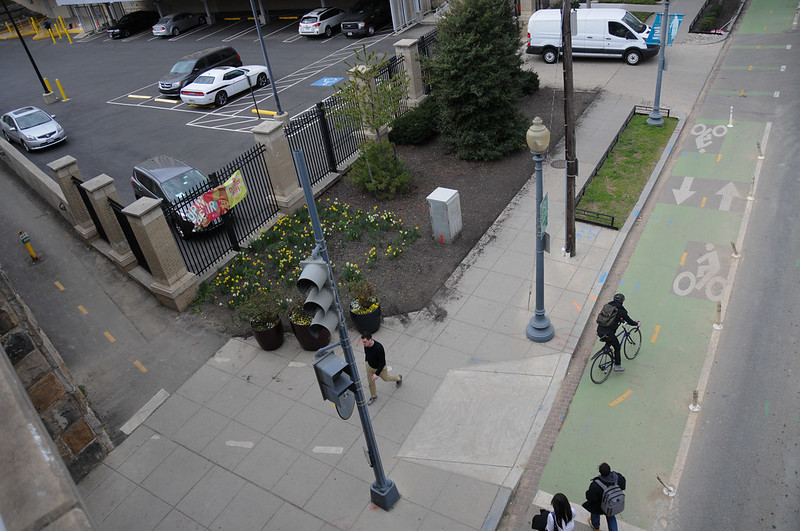
As we walked along the continuation of the bikeway that exists today in that former gap on M Street, DDOT’s Darren Buck said its contruction, “Came together rather quickly.” Why? “The community wanted it,” he said. And the protected bike lane on NE 1st, he added, “Sort of revealed the need for it.”
That’s the power of making bike access upgrades. Once you get them started and installed, people will expect — and then demand — more of them.
— Jonathan Maus: (503) 706-8804, @jonathan_maus on Twitter and jonathan@bikeportland.org
BikePortland is supported by the community (that means you!). Please become a subscriber or make a donation today.
